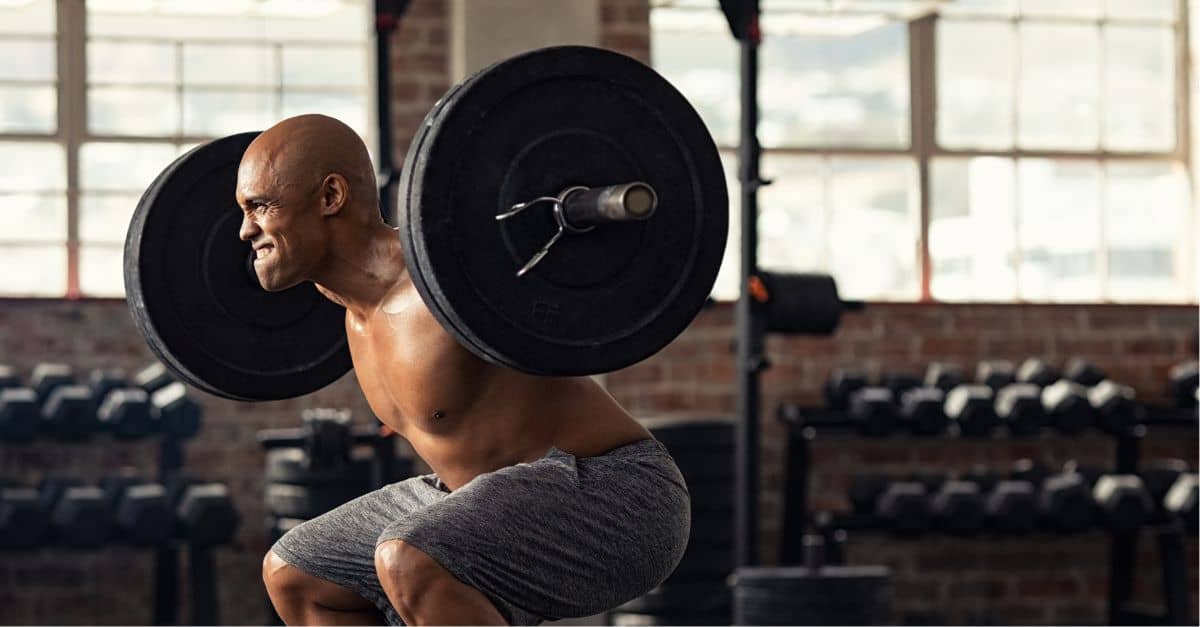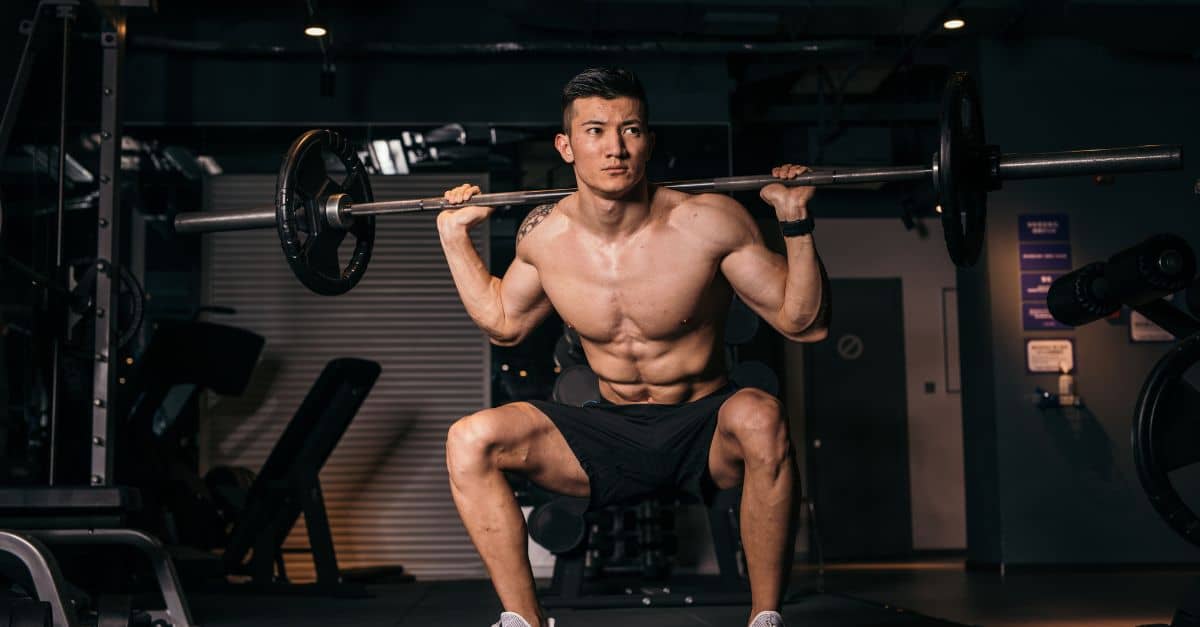Are you a fitness enthusiast or just starting your journey towards a healthier lifestyle, and you’ve encountered a common issue while doing squats your legs start to shake, making it challenging to complete your next set? Don’t worry; you’re not alone. Shaky legs during squats are a common problem that many people face, and it’s often a sign that your muscles are working hard to adapt and grow. In this comprehensive guide, we’ll explore the reasons behind shaky legs during squats, offer practical solutions, and provide expert tips to help you conquer this challenge. Whether you’re a beginner or an experienced lifter, read on to enhance your squatting performance and achieve your fitness goals.
Understanding Shaky Legs: Why Does It Happen?
Before we dive into the strategies to overcome shaky legs during squats, it’s essential to understand why it happens in the first place. Shaking legs are typically a result of several factors, and identifying these factors can help you address the issue more effectively.
1. Muscle Fatigue and Weakness
One of the most common reasons for shaky legs during squats is muscle fatigue and weakness. Squats are a compound exercise that engages multiple muscle groups, including the quadriceps, hamstrings, glutes, and lower back. If these muscles are not adequately conditioned or if you’re pushing your limits, they may become fatigued, leading to shakiness.
2. Imbalance and Coordination Issues
Poor balance and coordination can also contribute to shaky legs. Maintaining proper form during squats is crucial for stability. If your technique is flawed or if there’s a muscle imbalance, your body may struggle to maintain stability, resulting in wobbling or shaking.
3. Nervous System Activation
Your nervous system plays a significant role in muscle control. When you push your body to perform challenging exercises like squats, your nervous system may need time to adapt and activate the necessary motor units. This initial adjustment can cause your legs to shake.

4. Breathing and Oxygen Deficiency
Improper breathing techniques can lead to shaky legs during squats. Inadequate oxygen intake can result in dizziness, loss of stability, and muscle tremors. Learning how to breathe correctly during squats is vital for minimizing this issue.
Now that we’ve explored the reasons behind shaky legs, let’s move on to the practical tips and techniques to help you overcome this challenge.
Tips to Prevent and Overcome Shaky Legs
1. Warm-Up Thoroughly
A proper warm-up is essential to prepare your muscles and joints for the demands of squats. Start with light cardio to raise your heart rate and follow it up with dynamic stretches to improve mobility. Warming up adequately can help reduce the risk of muscle fatigue and shakiness during your workout.
2. Focus on Form and Technique
Proper squat form is the foundation for stability and strength. Ensure that your feet are shoulder-width apart, your back is straight, and your knees are aligned with your toes. Engage your core, and maintain a controlled descent and ascent. If you’re unsure about your form, consider working with a qualified trainer to receive guidance.
3. Progress Gradually
It’s tempting to load up the bar with heavy weights, but it’s crucial to progress gradually. Gradually increase the weight to give your muscles time to adapt and grow stronger. This approach can help prevent premature muscle fatigue and shakiness.
4. Incorporate Assistance Exercises
Supplement your squat routine with assistance exercises that target the muscles involved in squats. Leg presses, lunges, and Romanian deadlifts can help build strength and stability in your lower body.
5. Breathe Mindfully
Pay close attention to your breathing pattern during squats. Inhale deeply before descending and exhale as you ascend. Proper breathing not only ensures oxygen supply to your muscles but also contributes to better stability.
6. Utilize Supportive Gear
Consider using supportive gear such as a weightlifting belt or knee sleeves. These accessories can provide additional stability and support to your lower back and knees, reducing the risk of shaky legs.
7. Strengthen Your Core
A strong core is essential for stability during squats. Incorporate core-strengthening exercises like planks and Russian twists into your routine to improve your overall balance and control.
8. Mental Focus and Visualization
Mental focus and visualization techniques can help you maintain control and stability during squats. Before each set, visualize yourself performing the exercise with perfect form. This can enhance your mind-muscle connection and reduce shakiness.
9. Rest and Recovery
Adequate rest and recovery are essential for muscle growth and adaptation. Make sure you’re getting enough sleep and allowing your muscles to recover between squat sessions. Overtraining can lead to muscle weakness and shaky legs.
10. Stay Hydrated and Nourished
Dehydration and lack of proper nutrition can lead to muscle cramps and weakness. Ensure you’re staying hydrated and consuming a balanced diet to support your workouts.
Expert Advice on Overcoming Shaky Legs
To gain further insights into tackling the issue of shaky legs during squats, we reached out to fitness experts and trainers for their advice. Let’s hear what they have to say:
Expert Tip 1: Focus on Mobility
Expert: Sarah Johnson, Certified Personal Trainer
“Shaky legs can often result from poor mobility and flexibility. Before your squat workout, spend some time on mobility exercises to improve the range of motion in your hips, ankles, and thoracic spine. This increased mobility can lead to better stability and less shakiness during squats.”
Expert Tip 2: Mind-Muscle Connection
Expert: John Martinez, Strength and Conditioning Coach
“Establishing a strong mind-muscle connection is crucial for squat performance. Concentrate on feeling the muscles you’re working during squats. This not only helps you maintain form but also reduces the tendency for your legs to shake due to nervous system activation.”
Expert Tip 3: Use Eccentric Training
Expert: Lisa Collins, Fitness Specialist
“Eccentric training involves focusing on the lowering phase of the squat. Slower descents engage your muscles more, helping to build strength and control. This approach can be particularly effective in reducing shaky legs, especially when combined with proper form.”
Common Mistakes to Avoid
While working on overcoming shaky legs, it’s essential to avoid common mistakes that can exacerbate the issue. Here are some pitfalls to steer clear of:
1. Neglecting Warm-Up
Skipping a proper warm-up can increase the risk of muscle fatigue and shakiness. Always allocate time for a thorough warm-up routine before squatting.
2. Poor Nutrition
Inadequate nutrition can lead to muscle weakness and cramping. Ensure you’re consuming a balanced diet that supports your fitness goals.
3. Overloading the Bar
Lifting weights that are too heavy for your current strength level can lead to shaky legs and improper form. Progress gradually to avoid this mistake.
4. Incorrect Breathing
Improper breathing can disrupt your stability. Focus on your breath, and inhale before descending and exhale as you ascend.
5. Lack of Recovery
Overtraining and insufficient rest can lead to muscle fatigue and weakness. Prioritize rest and recovery for optimal results.
Real-Life Success Stories
To inspire and motivate you on your journey to conquering shaky legs during squats, here are some real-life success stories from individuals who faced similar challenges:
Success Story 1: Jenny’s Transformation
Jenny, 28, Software Engineer
“When I first started doing squats, my legs would tremble like jelly, and I struggled to complete my sets. But with consistent training and a focus on improving my form, I gradually built up my strength. Now, squats are one of my favorite exercises, and my legs are rock-solid!”
Success Story 2: Mark’s Squat Journey
Mark, 35, Personal Trainer
“I’ve been a personal trainer for years, but I, too, faced shaky legs during squats. It took me a while to realize that my form needed refinement. I worked with a colleague to fine-tune my technique and saw a significant improvement. It’s a reminder that even experienced lifters can benefit from continuous improvement.”
These success stories demonstrate that with dedication, the right strategies, and a commitment to progress, you can overcome shaky legs during squats and achieve your fitness goals.
Conclusion
Shaky legs during squats can be a temporary hurdle in your fitness journey. By understanding the underlying causes, following expert advice, and consistently working on your form and strength, you can overcome this challenge. Remember to warm up properly, progress gradually, and prioritize balance and coordination. With dedication and the right approach, you’ll soon find yourself conquering squats with confidence, leaving shaky legs behind. Your journey to stronger, more stable legs starts now.
A tabular on this topic
Here’s a tabular summary on the topic of “Overcoming Shaky Legs During Squats” to provide a quick reference to the key points:
| Topic | Summary |
|---|---|
| Understanding Shaky Legs | – Muscle fatigue and weakness – Imbalance and coordination issues – Nervous system activation – Breathing and oxygen deficiency |
| Tips to Prevent Shaky Legs | – Warm-Up Thoroughly – Focus on Form and Technique – Progress Gradually – Incorporate Assistance Exercises – Breathe Mindfully – Utilize Supportive Gear – Strengthen Your Core – Mental Focus and Visualization – Rest and Recovery – Stay Hydrated and Nourished |
| Expert Advice | Expert Tip 1: Focus on Mobility – Expert Tip 2: Mind-Muscle Connection – Expert Tip 3: Use Eccentric Training |
| Common Mistakes to Avoid | – Neglecting Warm-Up – Poor Nutrition – Overloading the Bar – Incorrect Breathing – Lack of Recovery |
| Real-Life Success Stories | – Jenny’s Transformation – Mark’s Squat Journey |
| External Resources | – Bodybuilding.com’s Guide to Perfect Squats – Harvard Health Publishing: Strength Training for Older Adults |
| Conclusion | By understanding the causes, following expert advice, and consistently working on form and strength, you can overcome shaky legs during squats and achieve your fitness goals. |
This table provides a quick and organized summary of the key points covered in the article, making it easier for readers to access essential information at a glance.
Final words
In conclusion, overcoming shaky legs during squats is a common challenge that can be addressed with the right knowledge and strategies. By understanding the underlying causes, implementing the provided tips, and seeking guidance from experts, you can make significant progress in your squat performance. Remember to prioritize proper warm-up, technique, gradual progression, and overall health. Real-life success stories remind us that dedication and continuous improvement can lead to remarkable results.
If you’re looking for more in-depth information or additional resources, don’t hesitate to explore the external links provided in this article. Your journey to stronger and more stable legs begins with the commitment to conquer shaky legs during squats. With perseverance and the right approach, you can achieve your fitness goals and enjoy the benefits of a more powerful lower body. Keep squatting, stay focused, and keep those legs steady.
External Resources
For further information and resources on squats and leg training, consider exploring these valuable external links:
- Bodybuilding.com’s Guide to Perfect Squats – Learn from experts about perfecting your squat form and maximizing leg training.
- Harvard Health Publishing: Strength Training for Older Adults – This article discusses the importance of strength training and its benefits for individuals of all ages, including strategies to build stronger legs.

Hey there, it’s Mike Rrsq, the Editor-in-Chief over at Jsquat.com, and I’m absolutely obsessed with all things squat fitness! I’ve been lucky enough to get some serious recognition for my work in this field. With a solid background in the fitness and wellness industry, I’ve been there right from the get-go, helping shape this website into what it is today.
You see, I’m not just the boss around here; I’m also a passionate contributor. I love sharing my insights through my articles, and trust me, they’re not your run-of-the-mill stuff. Each piece I write is a labor of love, filled with my expertise and real-world experience in the fitness universe. So, if you’re into fitness and looking for some inspiration, you’re in the right place!


